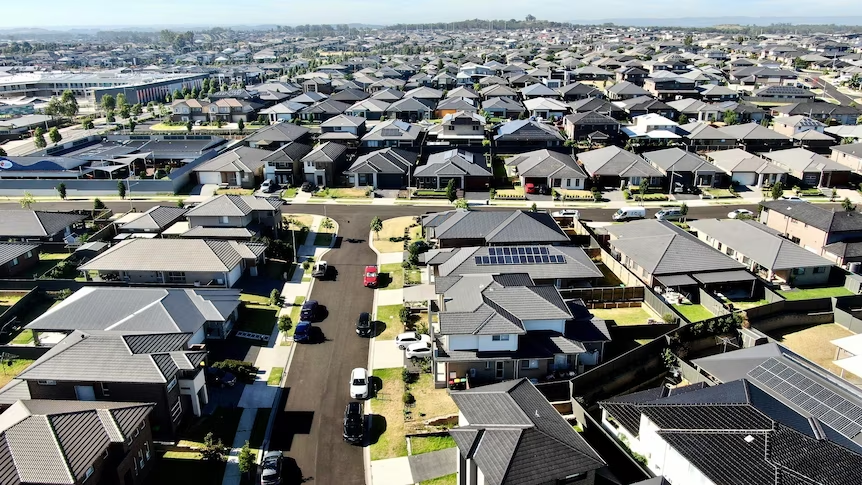
Why Australia's Housing Fund Can't Deliver
Why Australia's Housing Fund Can't Deliver
A major property developer spent eight months trying to secure financing for a $500 million mixed-use development last year.
Eight months.
The construction loan team had one set of documents. Land acquisition financing sat with another group. Mezzanine funding lived with a third party. Nobody could see the complete picture.
The developer paid $200,000 monthly in holding costs while everyone manually pieced together the financial structure. When we brought them onto our digital platform, the entire financing package was structured and matched with lenders within three weeks.
That same manual chaos is now strangling Australia's $10 billion Housing Australia Future Fund (HAFF).
The Volume Problem
HAFF applications significantly outstripped the nominal 8,000-home quota during the initial tender process. The fund is drowning in spreadsheets, phone calls, and manual cross-referencing across systems that don't communicate.
We've seen this exact scenario destroy commercial real estate deals. Someone has financial data in one system, property details in another, compliance documentation in filing cabinets. When you're processing 40,000 housing units, manual approaches become absolutely unmanageable.
Projects sit in queues waiting for someone to manually verify information that should be automatically validated. The bottlenecks multiply exponentially as volume increases.
Australia's rental affordability has reached its worst level in at least 17 years. Every month lost to administrative chaos means families remaining without housing solutions.
The Political Timeline Trap
Here's what most analyses miss: HAFF operates within a three-year political cycle.
You can't spend the first 18 months figuring out operational systems. If HAFF doesn't show tangible results before the next election cycle, it becomes a political liability rather than an achievement.
Politicians need to point to concrete outcomes. Quarterly reports showing money committed but nothing built won't survive political scrutiny. You're essentially designing a program to fail politically, regardless of funding levels.
The entire program architecture needed speed and transparency from launch day. Instead, we got traditional procurement processes trying to manage modern-scale challenges.
The Digital Marketplace Solution
The fundamental mistake was launching a $10 billion promise with paper-based thinking. That's like trying to manage a stock exchange with paper certificates.
We have built a platform where every project application, documentation piece, approval stage, and funding milestone gets digitised and visible to all stakeholders in real-time.
Think of our commercial real estate platform adapted for social housing. Developers submit standardised applications. Community housing providers track projects through every approval stage. Government officials see exactly where bottlenecks occur and intervene immediately.
Most critically, automated verification and automated notification processes replace manual cross-referencing. The system automatically validates financial capacity, planning approvals, and compliance requirements.
Imagine a real-time dashboard showing how many units are in planning, under construction, and completed, updated daily. That's the transparency and speed political cycles demand.
The Due Diligence Misconception
People think digitisation means cutting corners on due diligence. The very opposite is true.
Our platform serves 70 global financiers with different compliance requirements, risk appetites, and documentation standards. The digital framework doesn't reduce due diligence. It makes it more comprehensive and faster.
We've built automated verification layers that catch things human reviewers miss. For housing programs, systems would automatically cross-reference planning permits with local zoning laws, verify developer financial capacity against multiple databases, and flag compliance issues before they become problems.
Every application gets identical scrutiny, consistently. Compare that to manual processes where due diligence quality depends on who's reviewing the file, their energy level, and workload pressure.
We've seen critical issues missed simply because someone was rushing through paperwork. Digital due diligence is systematic and repeatable.
Speed comes from parallel processing. Instead of applications sitting in sequential queues, multiple verification processes happen simultaneously. You're not trading quality for speed. You're eliminating human bottlenecks that slow things without adding value.
Scaling Proven Solutions
Commercial real estate lending momentum increased 13% quarterly in 2024, approaching pre-pandemic levels with some improvement in digital processing capabilities.
The market processes $929 billion in loan maturities annually through digital platforms. That's far beyond HAFF's 40,000-unit scope.
Leading financing marketplaces allow brokers to submit deals to thousands of lenders in minutes. The technology exists. It just needs adaptation for social housing at scale.

Implementation Reality
Current government systems are designed for government needs rather than project delivery speed. The priorities are backwards.
A digital-first architecture would have standardised the entire process before allocating funding. Every stakeholder would operate from the same verified data simultaneously.
The difference between eight months and three weeks for our $500 million development wasn't luck. It was having everything in one place where all parties could see and collaborate on the same information.
HAFF is facing millions in delays because they can't see the forest for the trees. Manual processes collapse under volume while digital systems scale seamlessly.
The housing crisis demands operational excellence, not just funding commitments. Australia has the money. What it needs is the infrastructure to deploy it effectively.
We've proven this works at billion-dollar scale in commercial real estate. The same principles apply to social housing. The question isn't whether digital transformation works. It's whether Australia will implement it before the next political cycle arrives.
Australia has always been the "lucky country" and often claimed to be the "smart country" but manual processes in 2025 might just make it the 'luddite' country if we don't lift our game.

